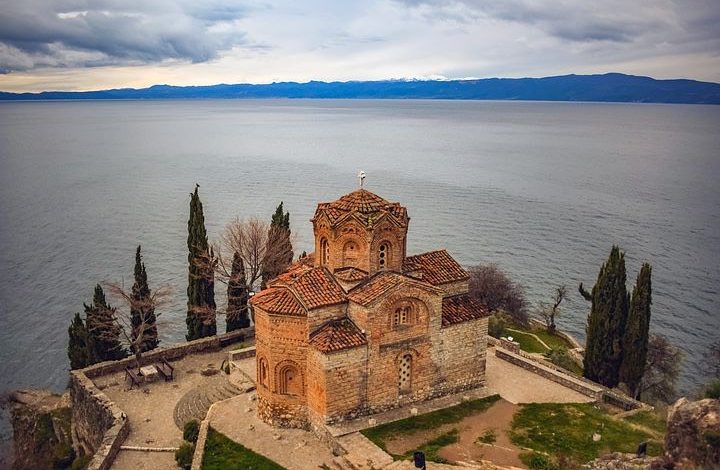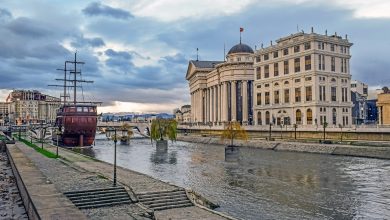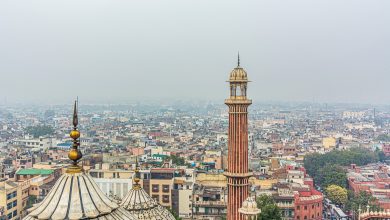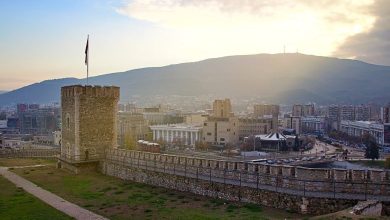OHRID- SMALL TOWN THAT WILL LEAVE YOU SPEECHLESS

Lake Ohrid is one of the oldest in the world and the deepest in the Balkans. It is located on the border of Macedonia and Albania – the Macedonian side was declared a World Heritage Site by UNESCO in 1979. With an area of 358 km², Ohrid is probably the most biodiverse lake in the world. Despite the extremely high level of endemism, we will also find numerous non-endemic species here – waterfowl or migratory birds, such as the European eel.
The lake is surrounded by the towns of Ohrid and Struga in northern Macedonia, as well as Pogradec in Albania.
City of Ohrid
It used to have 365 churches, one for each day of the year – hence why it was called the “Balkan Jerusalem”. The earliest inhabitants of the widest area of Lake Ohrid were the Illyrian tribes Enchele and Dassareti. According to tradition, this city, which was originally called Lychnidos, was founded by the Phoenician king of Thebes, Cadmus, who also built Budva in Montenegro. Ohrid has a warm, summer Mediterranean climate, which borders the oceanic climate – the average temperature of the warmest month is just above 22 ° C, with 2300 hours of sunshine a year.
What to visit?
The rich history of this city is not to be missed, so in addition to beautiful frescoes and theological performances, Ohrid churches keep a collection of more than 800 icons in the Byzantine style dating from the 11th to the end of the 14th century. The St. Naum Monastery, Church of St. Clement, as well as the church of St. Sofia with unreal frescoes that adorn its walls, are just some of the sights that tourists never miss.
Wander through the picturesque old town until you find an ancient Hellenistic theater, built in 200 BC, which still holds concerts and plays in the summer. Then climb the hill to the fortress of King Samuel, from where you can enjoy the panorama of the ancient city and the breathtaking lake. If you find yourself in Ohrid, don’t miss the opportunity to experience the magic of boating on Lake Ohrid. This area is also known for its centuries-old tradition of winemaking. Macedonians like to enjoy a drink, and Ohrid’s porches overlooking the lake are the perfect place to do exactly that. During the summer, all these cafes are right next to the lake, but now the paved promenade is empty and everything looks more authentic. And finally, to be a real tourist, don’t forget to buy Ohrid pearls – unlike ordinary ones, Ohrid pearls are made from shells with the addition of at least eight layers of secret emulsion, which give them a special shine. Legend has it that in 1920, a Russian migrant sold the technique of making these pearls to only two families, in which this knowledge has since been passed from generation to generation, through the male line.
Food
Macedonian cuisine is very similar to other Balkan cuisines. A popular national dish is “Tavče Gravče”, a bean soup, while several traditional specialties are made from trout in the vicinity of Lake Ohrid. Macedonia is especially known for the production of cheeses – young white cheese similar to feta, yellow cheese resembling cheese, as well as for excellent yogurt and milk. In addition, this country is rich in meat of exceptional quality, especially veal and lamb, and has a rich offer of game.
Transport
For tourists, Ohrid is extremely accessible – the nearby Ohrid International Airport (now known as the “St. Paul’s Airport”), is open all year round.
Accommodation
Another thing that makes this city so special is that in addition to luxurious hotels, you can sleep in well-preserved, traditional late Ottoman houses that have turned into a family bed and breakfast businesses – the charming atmosphere of these houses leaves no one indifferent.




